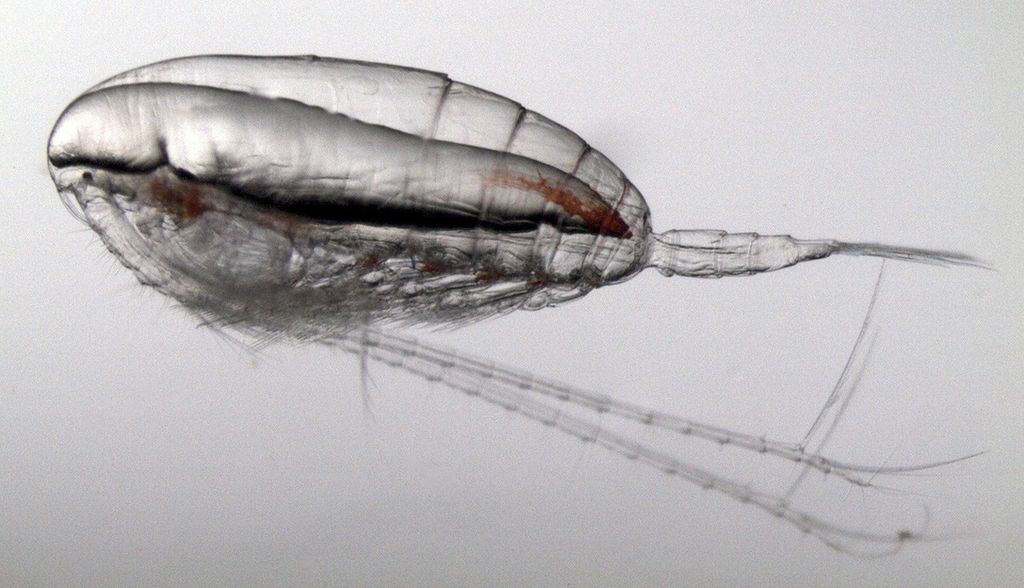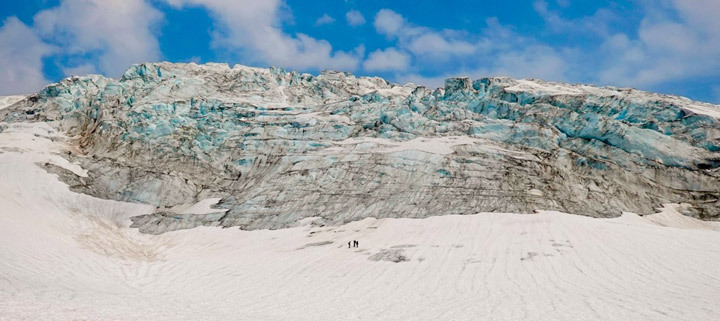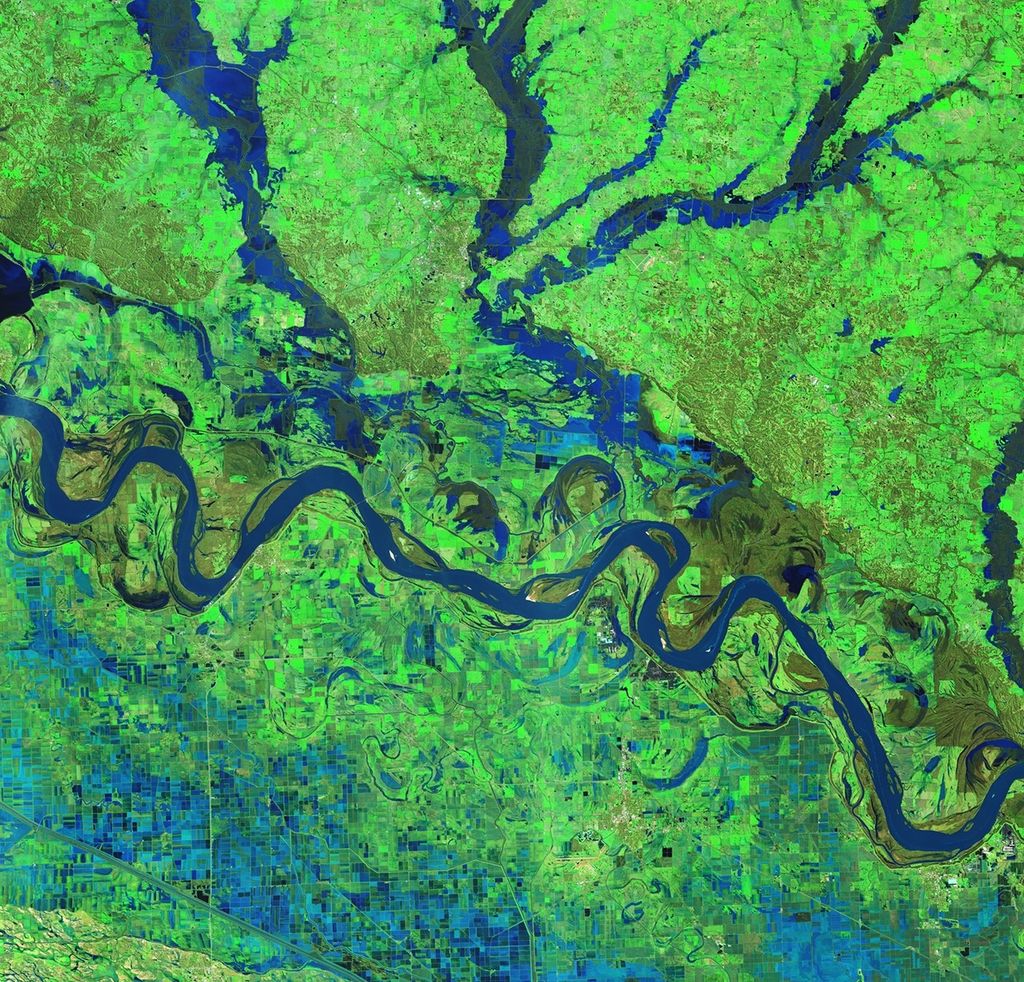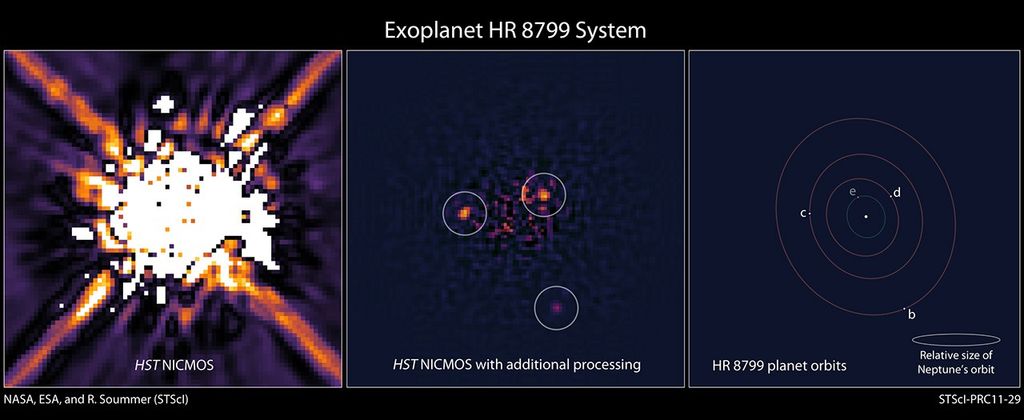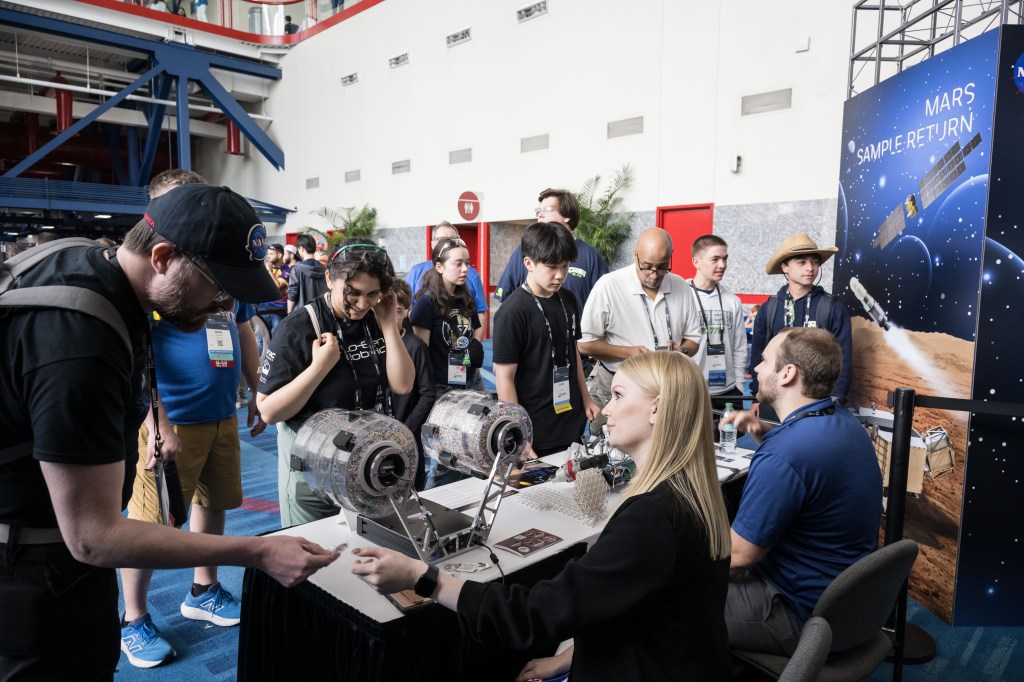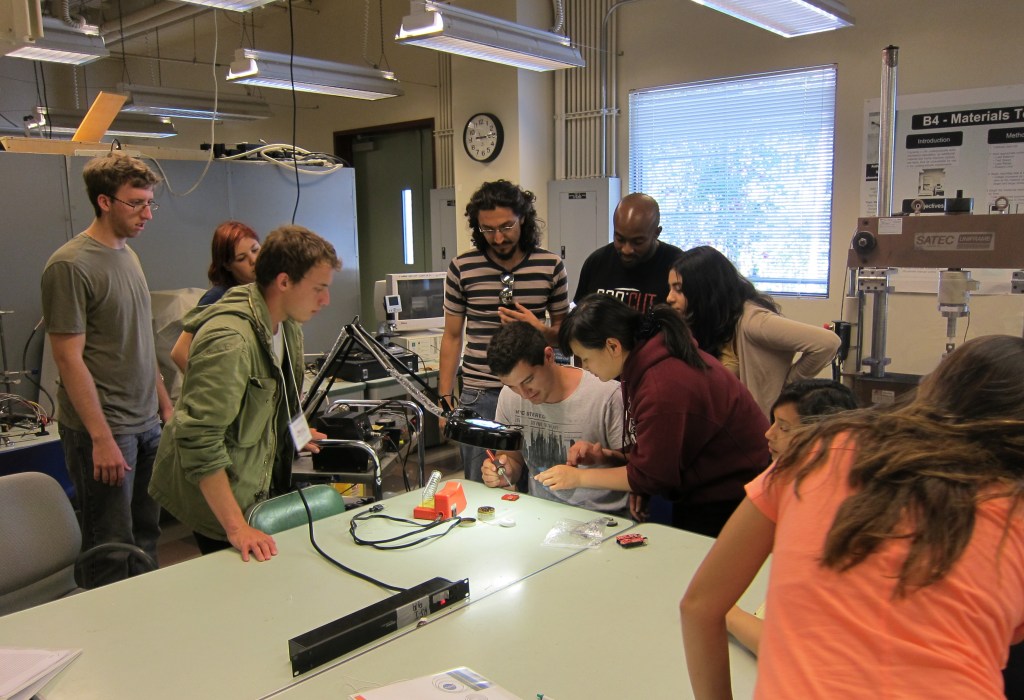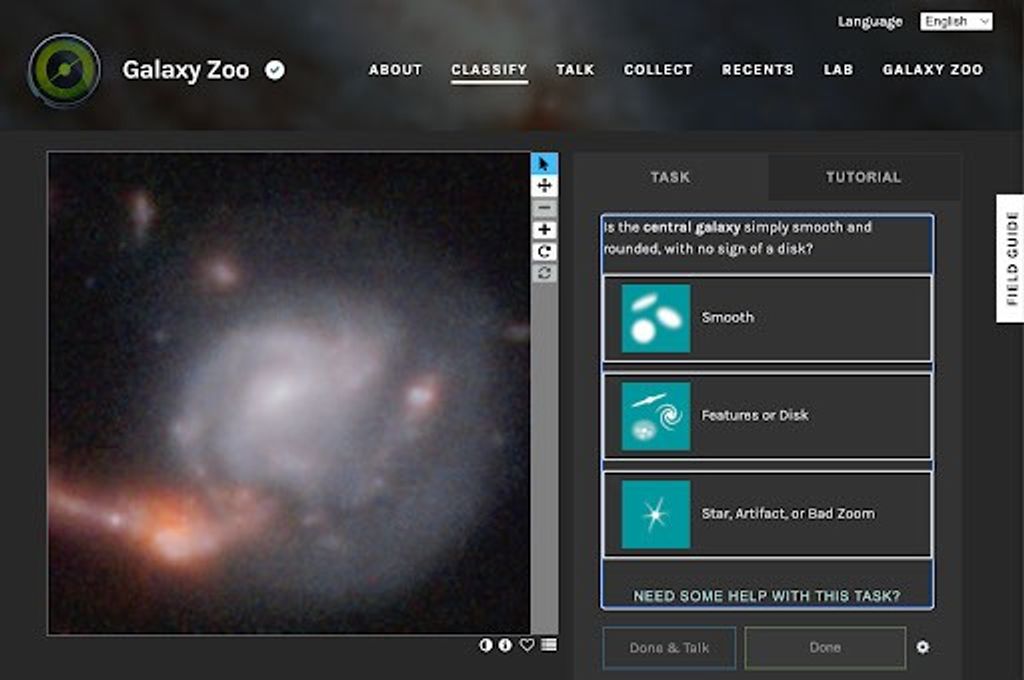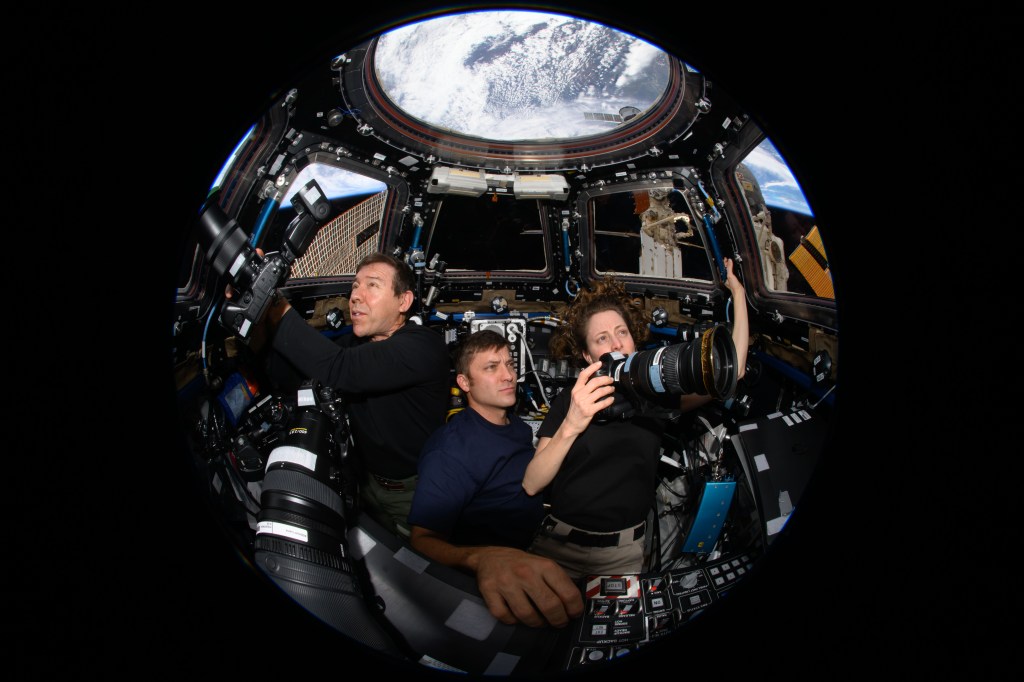


Webb Telescope Latest News
Webb's latest news blog releases in reverse chronological.
Webb Social Media (offsite) : X | Instagram | Facebook | Youtube | Flickr
Latest Webb News
Search and sort the news feed with the controls immediately below.

Though they don’t orbit around our Sun, sub-Neptunes are the most common type of exoplanet, or planet outside our solar system, that have been observed in our galaxy. These small, gassy planets are shrouded in mystery…and often, a lot of…

NASA needs your help identifying the shapes of thousands of galaxies in images taken by our James Webb Space Telescope with the Galaxy Zoo project. These classifications will help scientists answer questions about how the shapes of galaxies have changed…

How are we made of star stuff? Well, the important thing to understand about this question is that it’s not an analogy, it’s literally true. The elements in our bodies, the elements that make up our bones, the trees we…
Gas and dust ejected by a dying star at the heart of NGC 1514 came into complete focus thanks to mid-infrared data from NASA’s James Webb Space Telescope. Its rings, which are only detected in infrared light, now look like…
Observations from NASA’s James Webb Space Telescope have provided a surprising twist in the narrative surrounding what is believed to be the first star observed in the act of swallowing a planet. The new findings suggest that the star actually…

Follow-up research on a 2023 image of the Sagittarius C stellar nursery in the heart of our Milky Way galaxy, captured by NASA’s James Webb Space Telescope, has revealed ejections from still-forming protostars and insights into the impact of strong…

Using the unique infrared sensitivity of NASA’s James Webb Space Telescope, researchers can examine ancient galaxies to probe secrets of the early universe. Now, an international team of astronomers has identified bright hydrogen emission from a galaxy in an unexpectedly…

Long-sought auroral glow finally emerges under Webb’s powerful gaze For the first time, NASA’s James Webb Space Telescope has captured bright auroral activity on Neptune. Auroras occur when energetic particles, often originating from the Sun, become trapped in a planet’s…

Craving an ice cream sundae with a cherry on top? This random alignment of Herbig-Haro 49/50 — a frothy-looking outflow from a nearby protostar — with a multi-hued spiral galaxy may do the trick. This new composite image combining observations…

NASA’s James Webb Space Telescope has captured direct images of multiple gas giant planets within an iconic planetary system. HR 8799, a young system 130 light-years away, has long been a key target for planet formation studies. The observations indicate…

The Flame Nebula, located about 1,400 light-years away from Earth, is a hotbed of star formation less than 1 million years old. Within the Flame Nebula, there are objects so small that their cores will never be able to fuse…

High-resolution near-infrared light captured by NASA’s James Webb Space Telescope shows extraordinary new detail and structure in Lynds 483 (L483). Two actively forming stars are responsible for the shimmering ejections of gas and dust that gleam in orange, blue, and…

An international team of researchers has discovered that previously observed variations in brightness of a free-floating planetary-mass object known as SIMP 0136 must be the result of a complex combination of atmospheric factors, and cannot be explained by clouds alone.…

The supermassive black hole at the center of the Milky Way appears to be having a party, complete with a disco ball-style light show. Using NASA’s James Webb Space Telescope, a team of astrophysicists has gained the longest, most detailed…

Discovery proves decades-old theory of galaxy feeding cycle. Researchers using NASA’s James Webb Space Telescope have finally solved the mystery of how a massive galaxy cluster is forming stars at such a high rate. The confirmation from Webb builds on…

The U.S. Postal Service has issued two new stamps featuring iconic images from NASA’s James Webb Space Telescope. The stamps, issued Jan. 21, highlight a galaxy and a star cluster captured by Webb’s powerful infrared view of the universe. Webb…

Once upon a time, the core of a massive star collapsed, creating a shockwave that blasted outward, ripping the star apart as it went. When the shockwave reached the star’s surface, it punched through, generating a brief, intense pulse of…

In December 2022, less than six months after commencing science operations, NASA’s James Webb Space Telescope revealed something never seen before: numerous red objects that appear small on the sky, which scientists soon called “little red dots” (LRDs). Though these…

Astronomers have long tried to track down how elements like carbon, which is essential for life, become widely distributed across the universe. Now, NASA’s James Webb Space Telescope has examined one ongoing source of carbon-rich dust in our own Milky…

From new perspectives on the early universe to illuminating the extreme environment near a black hole, discoveries from NASA missions will be highlighted at the 245th meeting of the American Astronomical Society (AAS). The meeting will take place Jan. 12-16…
Latest Webb Blogs
Webb's Blog offers an insider's point of view covering a variety of topics that include on going operations as well as exciting Webb science images/spectra that are not yet peer reviewed and therefore not released as NASA feature articles ( IE the above official Webb News Feed). Blog posts are often co-authored by scientists and engineers and offer unique insights. <strong>Search and sort the news feed with the controls immediately below.</strong>

This artist’s concept shows what exoplanet K2-18 b could look like based on science data. K2-18 b, an exoplanet 8.6 times as massive as Earth, orbits the cool dwarf star K2-18 in the habitable zone and lies 120 light-years from…

Editor’s Note: This post highlights data from Webb science in progress, which has not yet been through the peer-review process. These results were reported as part of NASA’s role in the International Asteroid Warning Network. NASA’s James Webb Space Telescope recently…

Trans-Neptunian objects (TNOs) are icy bodies ranging in size from Pluto and Eris (dwarf planets with diameters of about 1,500 miles) down to tens of miles (Arrokoth) and even smaller. TNOs are on orbits comparable in size, or even much…

NASA’s James Webb Space Telescope is the largest and most powerful telescope ever launched to space. Its mirror is composed of 18 individual segments that have been aligned so accurately, that they effectively work as a single giant (21.6-foot, or…

Editor’s Note: This post highlights data from Webb science in progress, which has not yet been through the peer-review process. Measuring the Hubble constant, the rate at which the universe is expanding, is an active area of research among astronomers around…

Exoplanets are common in our galaxy, and some even orbit in the so-called habitable zone of their star. NASA’s James Webb Space Telescope has been busy observing a few of these small, potentially habitable planets, and astronomers are now hard…

Editor’s Note: This post highlights data from Webb science in progress, which has not yet been through the peer-review process. Over the last two years, scientists have used NASA’s James Webb Space Telescope (also called Webb or JWST) to explore…

NASA's James Webb Space Telescope is delivering on its promise to explore the farthest reaches of the universe, looking back to a time when galaxies were just beginning to form. Scientists have been eagerly waiting to use this complex observatory…

Editor's Note: This post highlights data from Webb science in progress, which has not yet been through the peer-review process. In November 2023, NASA's James Webb Space Telescope observed a massive cluster of galaxies named MACS J0138.0-2155. Through an effect…

One of NASA's James Webb Space Telescope's science goals is to understand how galaxies in the early universe formed and evolved into much larger galaxies like our own Milky Way. This goal requires that we identify samples of galaxies at…

NASA's James Webb Space Telescope observed the exoplanet WASP-80 b as it passed in front of and behind its host star, revealing spectra indicative of an atmosphere containing methane gas and water vapor. While water vapor has been detected in…

The rate at which the universe is expanding, known as the Hubble constant, is one of the fundamental parameters for understanding the evolution and ultimate fate of the cosmos. However, a persistent difference called the "Hubble Tension" is seen between…

On Apr. 21, 2023, the James Webb Space Telescope team shared that one of the MIRI (Mid-Infrared Instrument) observing modes, called Medium-Resolution Spectroscopy (MRS), showed a reduction in the amount of light registered by MIRI's detectors. Initial analysis of MIRI's…

Editor's Note: This post highlights data from Webb science in progress, which has not yet been through the peer-review process. NASA's James Webb Space Telescope obtained images of the Ring Nebula, one of the best-known examples of a planetary nebula.…

NASA's James Webb Space Telescope is nearly 1 million miles (1.5 million kilometer) away from Earth, orbiting around the Sun-Earth Lagrange point 2. How do we send commands and receive telemetry – the science and engineering data from the observatory…

July 12 marks the first anniversary of science and amazing discoveries from NASA's James Webb Space Telescope. To celebrate the year of spectacular discoveries, on July 12, 14 and throughout the summer, there will be multiple events online and live…

Editor's Note: This post highlights data from Webb science in progress, which has not yet been through the peer-review process. On June 25, 2023, NASA's James Webb Space Telescope turned to famed ringed world Saturn for its first near-infrared observations…

This week, astronomers around the world are celebrating the announcement of the next cycle of Webb observations. We asked Christine Chen, associate astronomer and JWST Science Policies Group lead at the Space Telescope Science Institute, to describe the selection process…

All 17 observing modes of the James Webb Space Telescope undergo routine performance monitoring and calibration. This month, while performing calibration by comparing the brightness of standard stars that have been well-cataloged by other observatories to what Webb's Mid-Infrared Instrument…

Editor's Note: This post highlights data from Webb science in progress, which has not yet been through the peer-review process. On Oct. 11, 2022, NASA's James Webb Space Telescope spent over 20 hours observing the long-studied Hubble Ultra Deep Field…
What is Webb Observing?
See current, upcoming and recent past observations scientists are making with the Webb Space Telescope. View details about each observation's science focus areas, the instruments used and more.
View the Tool








